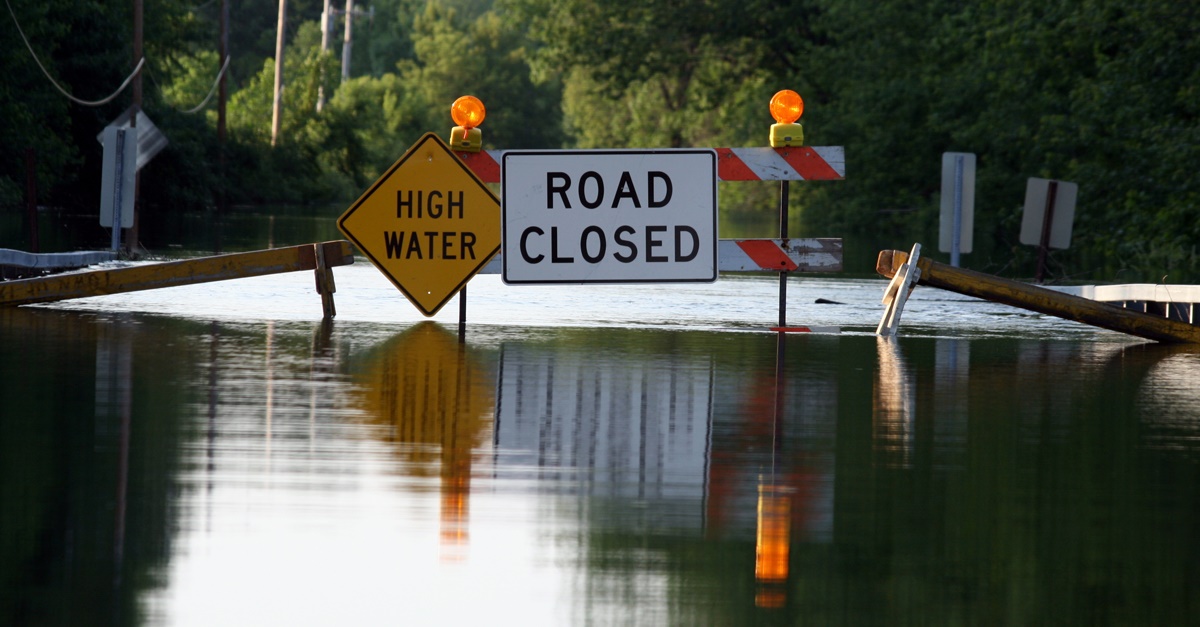In 2021, the U.S. saw 20 separate weather/climate events with economic losses of at least $1 billion each, according to the National Centers for Environmental Information at the National Oceanic and Atmospheric Administration (NOAA). As a result of these losses, insurers are re-evaluating their risk exposures in catastrophe-prone regions, and it’s becoming more challenging for insureds in those areas to purchase adequate coverages.
Climatologists predict that climate change will continue to cause larger and more frequent loss events as storms increase in both frequency and intensity. Now, more than ever, auto dealers must prepare their operations for extreme weather or suffer the unpredictable aftermath.
Proactive Risk Management
Making matters more complicated for auto dealers is the ongoing supply chain issues and “chip” shortages. Because dealers cannot easily replace damaged or lost inventory, there is a heightened focus on protecting the short supply they have on their lots.
It’s critical to prepare your clients with tools to protect their assets, placing a keen eye on their policy language as it relates to weather perils. Ask these questions when reviewing the policy:
- What exactly is covered by the policy?
- Is there a Self-Insured Retention (SIR) clause?
- What is the per vehicle deductible?
- Does the policy have deductible buy-down options, such as a parametric solution?
Additionally, many auto dealers are resorting to large capital expenditures (garages, canopies, and other wind-resistant structures) to protect inventory. These extra steps not only help to proactively manage risk, but also make the dealers a more attractive risk to underwriters. Some carriers will offer a premium credit on policies where risk management strategies are in place.
Risk management programs will differ depending upon the specific exposures and geographic locations of auto dealers and coverage needs will be unique to each client. Dealers should, however, think about the following severe weather trends when considering their coverage needs.
Wind/Hail (Severe Convective Storms)
Over the past 10 to 15 years, the increase in frequency and severity of convective storms has had a direct impact on auto dealers’ insurance premiums and deductibles. Premiums in wind prone areas have doubled, and in some cases tripled, while deductibles have increased from as low as $500 per vehicle to as high as $3,500 per vehicle.
Dealers in these regions have had some success mitigating hail exposure with parametric insurance. Instead of payment based on specific physical damage of an asset, parametric policies pay based on certain pre-defined thresholds and characteristics of an event (i.e., triggers), such as size of hail, windspeed, magnitude of seismic events, rainfall intensity, etc.
Because a parametric offering covers the impacts of an event and not just losses sustained to an asset, the policy can be used flexibly to cover expense associated with the triggering event which may otherwise be excluded from traditional insurance policies.
The claims process is also faster—evolving technology provides exact measurement and location of hail and wind (tornado) events, allowing carriers to proactively communicate with impacted insureds rather than waiting for claims submissions.
Flood Zones
The increase in extreme weather patterns is resulting in record-breaking floods becoming the new normal, a condition wreaking havoc on auto dealerships.
In 2017, the severe weather of Hurricane Harvey affected approximately 500 auto dealerships in Houston, Texas, destroying more vehicles than any other natural disaster in U.S. history. An estimated 500,000 to one million vehicles needed to be replaced.
Flood zones have become a moving target as flood scores change year over year. Auto dealers located in coastal areas that were categorized as Zone X in 2020 may now find themselves in a flood zone in 2022.
Flood insurance capacity in CAT-prone areas is limited and if coverage can be secured, it is very costly.
As we approach the 2022 hurricane season, researchers are predicting another above-average storm season and auto dealers need to understand their coverages before storms hit. Many policies cover flood only if an evacuation plan is executed, meaning only if there are no cars in harm’s way. A better option may be a small sub-limit with no requirement to move cars.
Wildfire Exposures
For three of the last four years, insured losses from wildfires in the U.S. have exceeded $13 billion, according to NOAA.
It has become increasingly difficult to obtain coverage for wildfire risk exposures and it’s not uncommon for the coverage to be limited or excluded from the policy. Most markets that will consider wildfire risk have implemented wildfire risk score maximums, property limit maximums, and restrictions or exclusions on building or exposure type.
Wildfire risk score is driven by what surrounds a property, so auto dealers located in urban areas will have a lower risk score than a dealership situated near substantial vegetation. A low wildfire risk score, however, doesn’t mean a dealership is untouchable.
In 2019, for example, a vegetation fire along the 99 freeway in Bakersfield, Calif. spread to an auto dealer’s lot and damaged or destroyed more than 80 cars. This unpredictable fire was ignited by a truck dragging a chain on the highway which created sparks and ignited grass adjacent to the highway, right next to the dealership. So, it’s important to evaluate what is immediately surrounding an auto dealer’s property and consider standard fire suppression and mitigation tactics where fire exposures exist.
Takeaway
As climate change continues to impact the weather, insureds need to carefully consider how weather events could impact their business operations. As risk exposures shift and evolve, auto dealers need to continually re-evaluate their insurance coverage and proactively seek policies that provide the protection they will need.
The underwriters for Amwins Program Underwriters’ DealerGuard Insurance Program focus exclusively on automotive exposures and have the expertise to help you ensure your auto dealer clients have the coverage they need. Contact us today to learn more about available policies.


